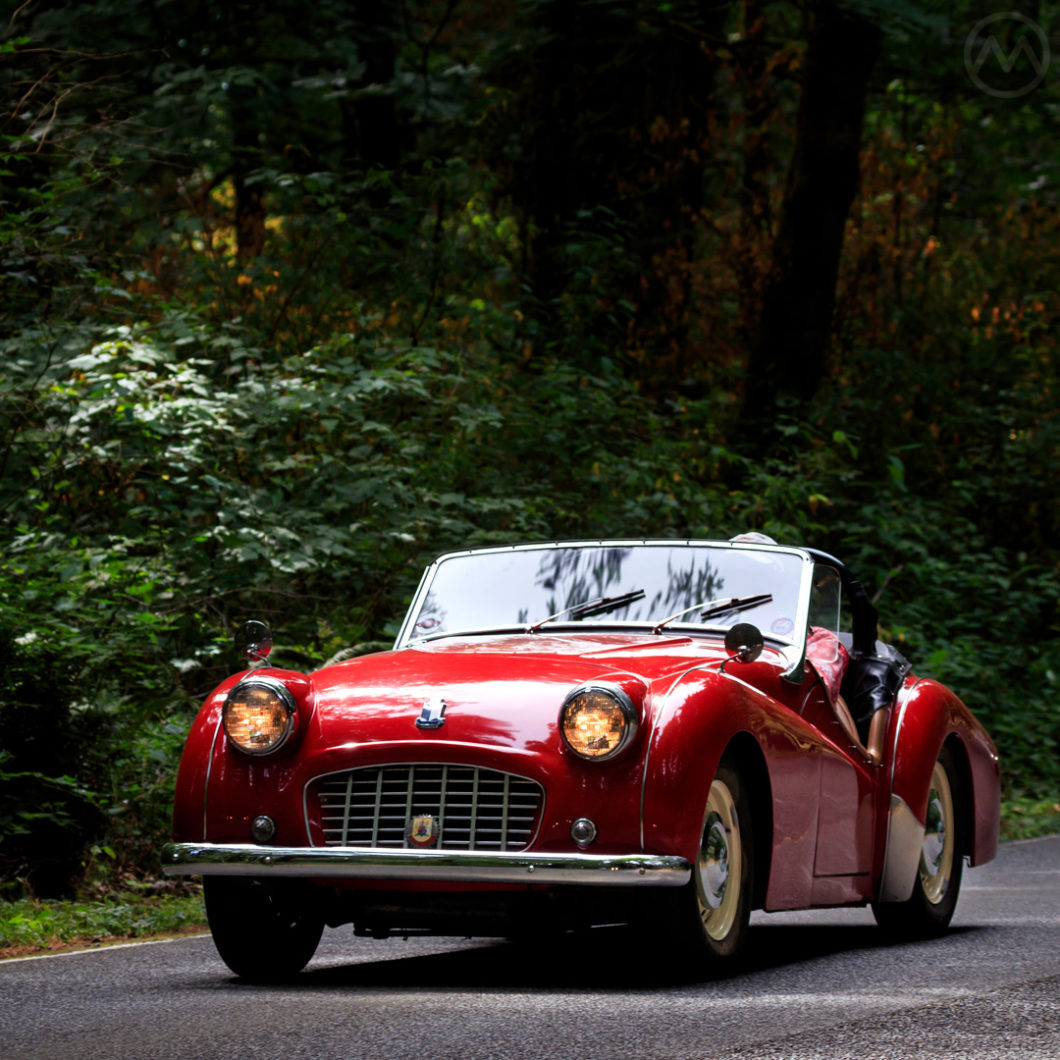Triumph’s legendary TR3, in fact, all post-war Triumphs, probably wouldn’t have happened if not for an argument between Sir John Black and William Lyons.
Former Humber man Black had revived a nearly moribund Standard in the 1930s, and Lyons’ early SS and SS Jaguar cars were powered by Standard engines and often used other Standard pieces before the war.
As the war drew to a close, Lyons wanted SS/Jaguar to make engines and components entirely of its own design, or at least in-house. His vision of the future was incompatible with Black’s, and Black may have thought Lyons a little ungrateful. Black liked sports cars and special projects, and was also supplying engines to his old friend HFS Morgan starting in 1938.
With the SS/Jaguar alliance starting to sunset, Black bought the bombed-out remains of the Triumph Motor Co. in November, 1944, possibly to make his own kind of Jaguars.
Standard-Triumph
In becoming “Standard Triumph,” Black gained the services of Walter Belgrove, Triumph’s lead designer who’d penned the pre-war Gloria and Dolomite.
Belgrove’s first, and most important, assignment was designing the postwar 1947 Standard Vanguard. Black actually had Belgrove go out to the Amercan Embassy and sketch the Plymouth staff cars driven there in 1945/46 as fodder for the Vanguard design – it was not surprising in the end that this important car for Standard came out looking very American.
Because he was busy with the Vanguard, Belgrove was only tangentially involved in the first postwar Triumph cars – the 1800 Roadster, the Renown, and the Mayflower. These latter two were shaped by Mulliners, but with Belgrove’s input, and they were almost diametric opposites of the Vanguard.
The 1800 Roadster bowed in 1946, but just two years in, Lyons’ new XK120 made the gentlemanly Roadster seem dated. Meanwhile, MG’s popular TC and later TD were far cheaper and struck a deep vein of interest in America.
To compete in between the MGs and the Jaguar, Black had Harry Webster, with some help from Belgrove, develop the bullet-shaped TRX in 1950 – but it proved far too expensive and complex to produce.
Just after the TRX, Sir John attempted to get a sports car “off the rack” buy making a generous offer to purchase Morgan, but the elder Morgan politely declined to sell. Black supported Morgan anyway by continuing to supply the company with Standard and later Standard-Triumph engines for many years.
Breakfast in America
American exports were what Black wanted most of all, so Triumph went back to the drawing board and developed what became the 20TS/TR1, a far simpler car using more parts bin components – Triumph Mayflower front suspension, Standard Flying Nine frame, Standard Vanguard four. Belgrove was given just ten weeks to design the exterior by Black.
The car proved a poor handler and only a few prototypes were made, but with help from BRM test driver and engineer Ken Richardson, it was improved into the 124-mph TR2, bowing at Geneva in 1953. The raucus, raw TR2 (with lines evolved by Belgrove) wasn’t as pure as a Morgan or outright fast as an XK, but the car was very fast for it’s £550 price.
It proved an immediate hit, especially in the U.S., hitting exactly the target Black wanted.
The TR2 evolved into the TR3, with bigger carbs and more power, in late 1955, gaining more comfort options and optional overdrive. In 1957, it got standard front disc brakes, the first mass-market British car to have them. The TR2 and the evolutionary TR3 firmly established the Triumph Sports car bona fides, and were hugely popular in the United States – where 80% of exports went.
It cost a little bit more than a low-end Detroit car, but less than any other big sports car and less than performance-oriented Detroiters like the Dodge D-500. It offered a very pure sports car experience and real technical sophistication for the time after the addition of the disc brakes.
The car was a success in international competition too, often being seen on events like the Liège–Rome–Liège, RAC Rally, the Monte Carlo Rally, and the Alpine Rally. There were also forays at Sebring and LeMans.
The TR3 Brings Change
There were, however, a couple of sour events that happened as the TR2 was becoming the TR3. Sir John was severely injured while on a test ride in the TR-derived Swallow Doretti with Richardson in early 1954.
The Swallow-Doretti, a specialist car from the old Swallow company, by then a part of “Tube Investments,” was yet another sports car project Black wanted to support. Like Morgans, it was more specialized and expensive, and so not necessarily a direct TR competitor.
Then, just as the TR3 was debuting, Belgrove abruptly quit during the 1955 London Motor Show, leaving behind no obvious replacement, though styling was handed off to Vic Hammond, who had styled the 1953/54 Standard Eight and Ten.
Belgrove’s departure supposedly stemmed from one too many arguments with Standard-Triumph Tech director, Ted Grinham.
Because of Belgrove’s departure, the TR3 got only a few cosmetic updates into the 1960s, the most significant being a new front fascia with a full-width grille for 1958. This early (1956/57) TR3 has the original style front end.
Hammond worked on a successor but never got his newer design approved. To fill the design void left by Belgrove, Triumph eventually turned to Giovanni Michelotti for the TR4.

